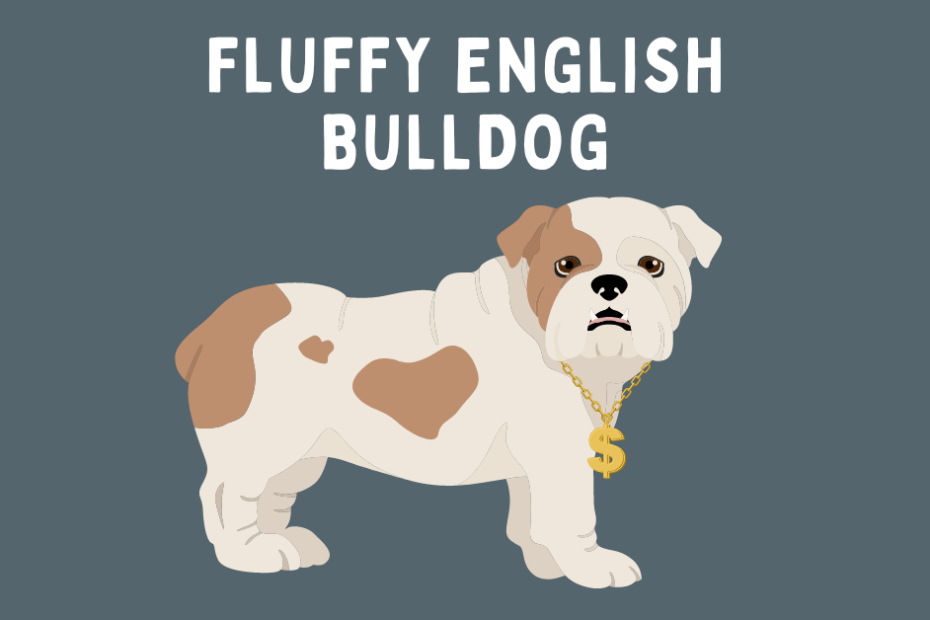Different dog breeds come in and out of fashion, but right now, the Fluffy English Bulldog is one of the most popular breeds in the world.
But, how do you get a fluffy English Bulldog when the breed is known for it’s smooth and short coat?
In this article, I am going to explore the unique and rare “fluffy” coat of English Bulldogs.
What is a fluffy English Bulldog?
The fluffy English Bulldog is an English Bulldog that has a fluffy coat due to a genetic mutation — specifically, an Lh genetic mutation to the dog’s L locus.
Essentially, it’s a normal English Bulldog but with fluffy hair substituting for the dog’s regular coat.
This mutation has also become widely popular among French Bulldogs (see below) and Pit Bulls, close cousins of the English Bulldog.
Genetics Behind the Fluffy Coat
In this section, I’ll explain the genetics behind a fluffy coat.
Canine hair length is affected by the L locus genetic trait because of a DNA variation in the Fibroblast growth factor 5 (FGF5) gene that prohibits FGF5 from working as a termination signal for hair growth in the hair follicle.
This causes the L locus trait to affect canine hair length. Dogs that have just one copy (Sh/Lh) or no copies (Sh/Sh) of the Lh genetic variant will have short hair.
Dogs that have two copies (Lh/Lh) of the variant will have long hair like that which is found in Retrievers, Corgis, and Dachshunds.
The Influence of Fluffy Carriers
A dog doesn’t need to be long-haired or fluffy itself to have long-haired or fluffy offspring; it merely needs to have one copy of the Lh genetic variant (long hair gene) mentioned above.
This is what is called a “fluffy carrier” and the genotype looks something like Sh/Lh.
If two fluffy carriers were bred, then there is a 25% chance the offspring will be fluffy. The Punnett square for this match is shown below.
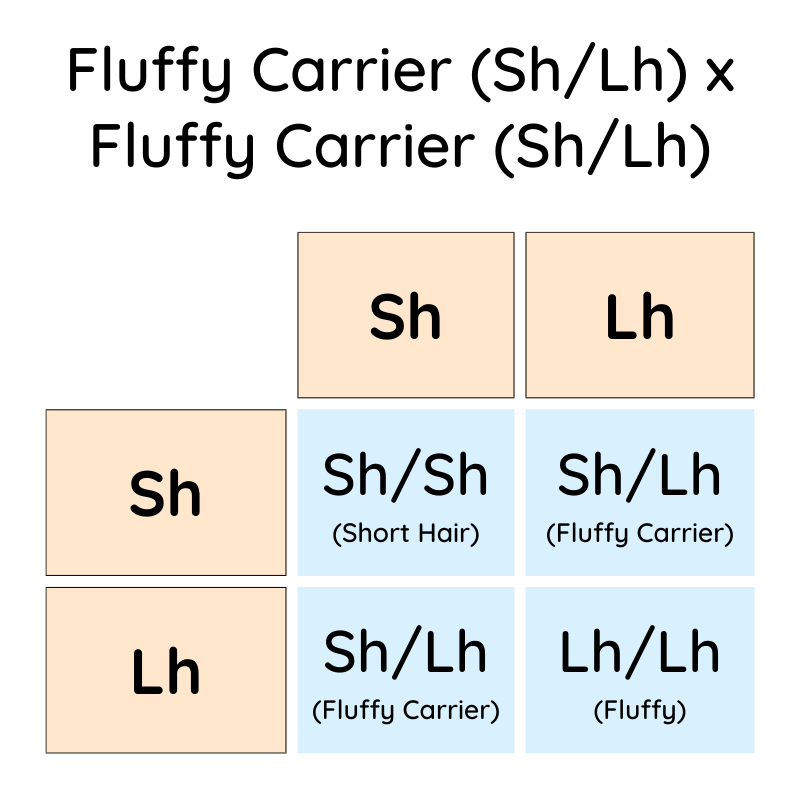
To guarantee 100% long-haired/fluffy offspring, both parent dogs should have the two-copies of the Lh genetic variant, i.e., they should be long-haired (Lh/Lh). The square below shows how that would play out.
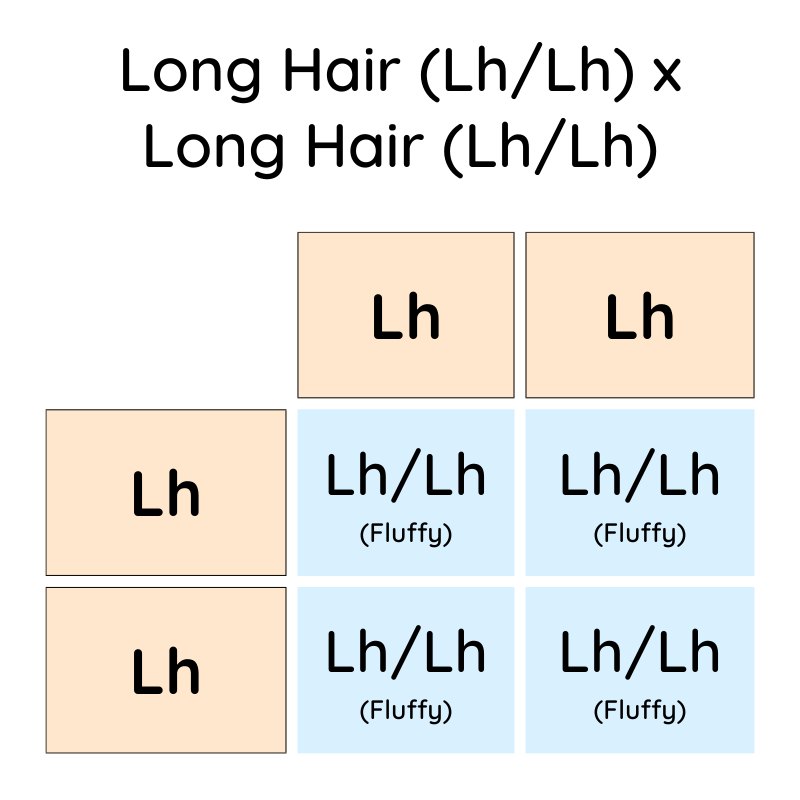
Where did the fluffy hype come from?
The fluffy English Bulldog is starting to receive attention thanks to the fluffy French Bulldog.
Fluffy Frenchies have taken over the internet. There are over 250,000 Instagram posts that contain the hashtag “fluffyfrenchie” or a close derivative.
This craze has bled over to other Bulldog breeds, like the English Bulldog. To fully understand the fluffy English Bulldog phenomeneon, you need to understand it’s underlying force – the French Bulldog.
Popularity of French Bulldogs
The popularity of French bulldogs has skyrocketed recently. According to the American Kennel Club, in 2020, they surpassed the German Shepherd to become the second most popular dog breeds in the U.S. and the most popular dog in New York City.
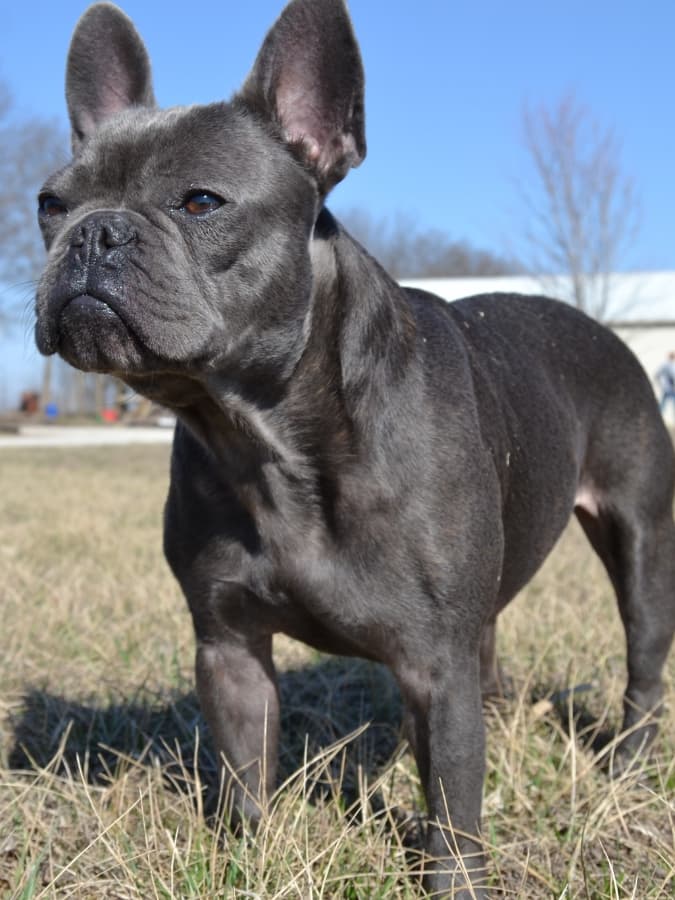
Short coats in brindle (a streaky brown that can sometimes appear black), cream, white, or fawn with the potential for white markings are the breed standard.
For those who can get their hands on one and happen to have tens of thousands of dollars to spend, the rare recessive Lh genetic variation described above can generate longer-haired “fluffy Frenchies,” occasionally in designer hues like blue-gray or lilac.
For the moment, the long-haired Frenchie is the hottest of “hot” dogs.
Fluffy French Bulldogs
The demand for fluffy or long-haired French Bulldogs has increased significantly, according to Dan Menczel, customer service manager at TomKings Puppies.
TomKings is a breeder headquartered in Budapest, Hungary, whose primary market is New York.
TomKings has been selling “fluffies” for five years, with prices starting at $22,000 each, as opposed to $4,000 to $7,000 for their short-haired dogs.
Menczel calculated that demand has multiplied by ten during the last several years. Also, there are claims that fluffy French Bulldogs have some famous supporters.
According to breeder Allee Powell of Portland, Oregon, “Pete Davidson and Kim Kardashian are looking for a fluffy Frenchie” (at the time this was written Pete and Kim were still a thing).
Breeders such as Powell’s Fleek Frenchies, which just launched a fluffy breeding program, are also boosting demand.
Powell, who will have her first litter of fluffies soon, observes, “Everyone likes Frenchies and ‘fluffy’ things, so this breed combines the best of both worlds.”
Attempting to breed dogs with a special coat texture associated with an uncommon recessive gene can promote careless breeding and increase health problems.
Still, others contend that this new variation could harm the breed. Bulldogs are already well-known for several medical conditions, including respiratory difficulties and hip concerns.
Jorge Bendersky, a famous groomer who served as a judge on ABC’s Perfect Pooch, said that fluffy dogs were his “next nightmare.”
“They are being seen as a novelty — an anomaly — so prices are skyrocketing, and everybody wants one. Instead of just finding these dogs, unscrupulous breeders [could] start mixing them and making fake fluffies by crossing a French Bulldog with a Pekingese. Soon, a Kardashian will be walking around with one.”
Jorge Bendersky
But some owners aren’t sorry for their opulent pets. Certain well-to-do families now value and enjoy having their new dogs around.
They admit there’s only one issue — they get pulled over on the street and harassed almost every five minutes when their dogs are out.
How French Bulldogs are closely related to English Bulldogs
French Bulldogs have a tangled past, just as most intriguing individuals do.
As its name implies, the French Bulldog is descended from the native Bulldog of Britain, which, compared to its cousins, was larger and, at least until the early 19th century, tougher.
These dogs were required to be “bulldogs” to engage in the dangerous sport of bull-baiting, which entailed seizing an agitated cow by the snout and holding on for dear life.
Regular Bulldogs moved to the show ring when animal fighting, including bull-baiting, was outlawed in England in the 1830s.
There, they were classified into size-based divisions, one of which was for the English Toy Bulldog, the cutest of these smush-faced charmers.
The industries common in the English countryside were literally threatened with extinction as early as the 1810s by machines that could produce textile items a hundred times quicker than a human hand could.
A man named Ned Ludd organized a mutiny of irate textile workers who hammered the new machines with sledgehammers in the middle of the night and penned letters of complaint addressed from “Ned Ludd’s Office, Sherwood Forest,” in Nottinghamshire, famed centuries earlier as the home of Robin Hood.
While eventually unsuccessful in his attempts to halt development, Ludd lives on in the term “Luddite,” which now refers to someone who disapproves of technological advancements.
By the time the Toy Bulldog came, Ludd’s uprising had subsided, and Nottingham’s highly trained, home-based craftspeople had been replaced by meager-waged laborers who put in long hours in sometimes hazardous mills.
Nobody is exactly sure why these female lacemakers developed a fondness for the Toy Bulldogs.
In the cramped apartments that were all the ladies could afford with their limited income, maybe these little Bulldogs consumed fewer rations and took up less space.
They may have created an alluring diversion for fleas, which were ordinarily human-bound, since the dogs fit comfortably on a lap.
We know that by the time the Industrial Revolution fully transitioned the employment of the lace workers; they had taken the dogs with them over the English Channel to the Normandy region of northern France.
There, the importance of custom apparel persisted, and lacemakers’ aptitude for fabric and needles was still in high demand.
The tiny pups quickly gained favor with many echelons of society, including ladies of the evening. Some of the puppies even had crooked, upright ears as opposed to the customary “rosed,” or crinkled, ears prized by Bulldog purists.
But, the popularity of the French Bulldog didn’t end there.
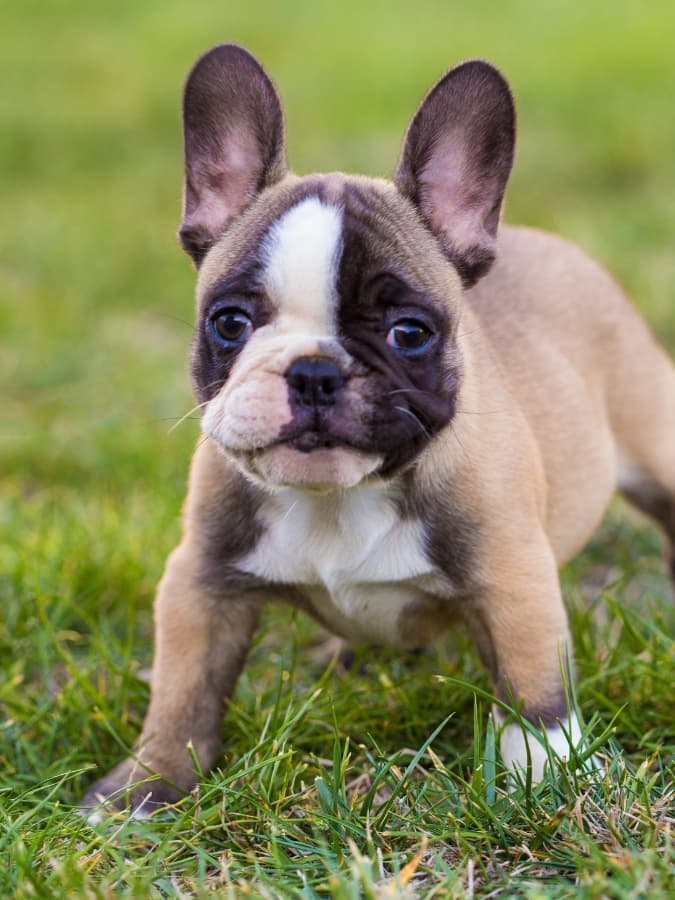
Because of their courtesan history, they were fashionable with the ruling class and even the royals of the time. Ortipo, a loving French Bulldog owned by Grand Duchess Tatiana Romanov, is said to have suffered the same fate as the remainder of the Russian royal family.
Fabergé created a crystal sculpture of the famous dog currently displayed at a St. Petersburg museum.
The breed eventually caught the attention of American visitors, who brought it to the U.S., where the dogs are considered to be on their third and last leg of travel.
A French Bulldog is even known to have perished on the Titanic; her owner, financier Robert Williams Daniel, insured her pet for 150 British pounds, which translates to almost $17,000 today.
Gamin de Pycombe, the dog, did not make it out of the sinking, but her well-heeled owner was more fortunate.
The French Bulldogs that did make it across the Atlantic consistently demonstrated that the breed’s attractions were universal.
The first Frenchie club in history was founded by Americans, who also codified the breed’s distinctive “bat” ears.
According to AKC registrations, the French Bulldog is now the second most popular breed in the U.S. — not bad for a former guttersnipe who used to frequent the wrong side of the tracks.
Ok, now let’s get back to the English Bulldog!
What Does a Fluffy English Bulldog Look Like?
A fluffy English Bulldog looks exactly how it sounds – the same Bulldog characteristics but with long hair instead of short. Below are a few pictures of fluffy English Bulldogs.
Like their French counterparts, which tend to be much smaller and have more distinctive ears, English Bulldogs are one of the most well-liked dog breeds in the world.
They’re renowned for their fun and vivacious dispositions and are devoted and compassionate friends of their owners.
English Bulldogs typically stand 26 inches in height and weigh 55 to 75 pounds. They have broad chests, deep-set black or dark brown eyes, and a stocky physique that gives them an appearance of wisdom and charm.
These dogs are gentle giants with thick fur coats and bubbly spirits. While they come in a range of colors and coat styles, a smooth coat of white with dark or light brown spots on their body is the most typical.
Longer-haired English Bulldogs are sometimes referred to as “fluffs.”
However, it’s worth noting that the English Bulldog breed standard specifies that the coat should be “short, close, and glossy,” so a fluffy coat is not considered desirable according to the defined breed standard.
Despite recent trends regarding long-haired variants, there’s not yet a recognized variation of the English Bulldog specifically bred for a longer or fluffier coat.
English Bulldogs have small muzzles, powerful jaws, and ears that curl back against their heads. When joyful or enthusiastic, their lengthy tails wag rhythmically.
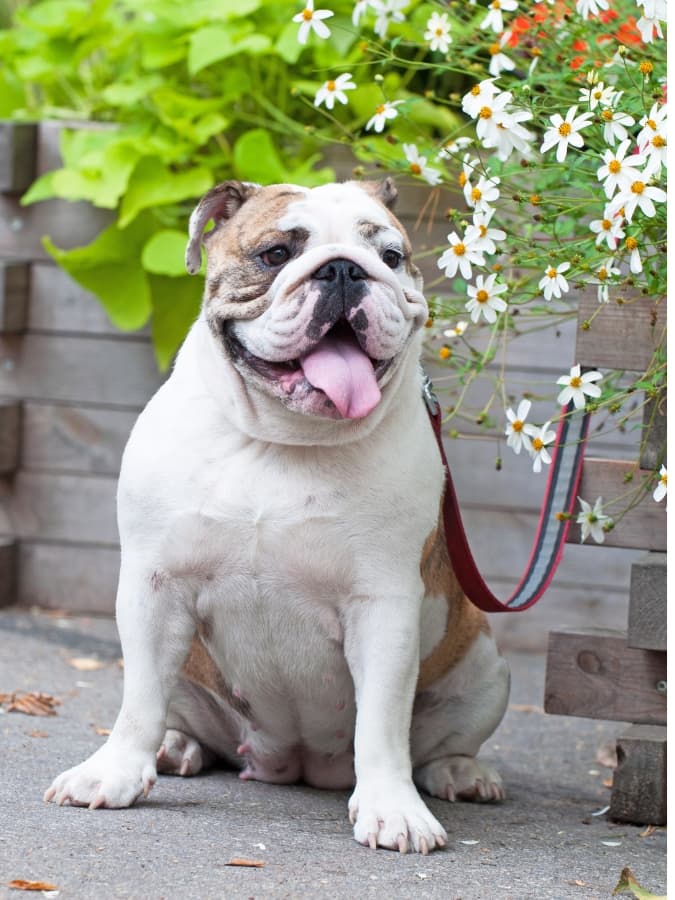
English Bulldogs are self-assured canines that like to play catch, romp around beaches, and relax on sunny days.
They’re lovely family pets since they’re loving towards their owners and are often reasonably well-behaved when inside.
They may be aggressive against other animals in their yard or house since they can be territorial, so it’s crucial to teach them early on not to harass or harm other animals.
English Bulldogs also need frequent exercise; if they’re left alone too long, they might develop destructive chewing or digging habits and cause damage to walls or furniture.
Coat Color
As stated above, English Bulldogs can have a variety of coat colors. According to their American Kennel Club (AKC) breed standard, acceptable coat colors for English Bulldogs include white, fawn, red, cream, piebald (white with colored patches), or brindle.
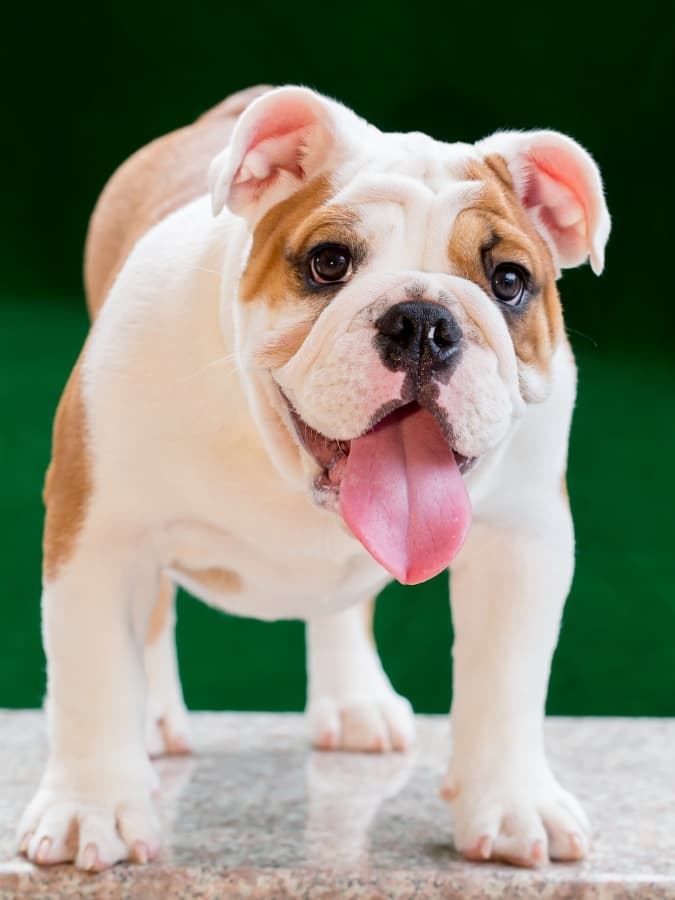
Note that any of these colors can be “fluffy” (long-haired), as noted above. It’s also worth acknowledging that some coat colors are not considered acceptable by the AKC breed standard, such as black or black and tan.
Additionally, some coat colors may be associated with specific health issues, such as “blue” colorations, which have been linked to skin problems and other health concerns.
Health Issues of English Bulldogs
English Bulldogs are known to have various health issues associated with their breed, such as respiratory problems, skin issues, joint problems, and eye problems.
These health issues are mainly due to the unique physical characteristics of the breed, such as their short snouts and stocky build. As a relatively big dog, they can be at risk for hip dysplasia as they age.
If you’re considering getting an English Bulldog — whether fluffy or not — it’s important to be aware of these potential health issues and to work with reputable breeders who screen their dogs for genetic disorders and take steps to promote overall health and well-being.
It’s also important to provide your Bulldog with regular veterinary care and stay on top of any health issues.
If breeders prioritize appearance over health, they may engage in practices that exacerbate these problems.
For example, breeding dogs with extremely flat faces can lead to even more severe breathing problems and increase the risk of heat stroke. Overbreeding can also lead to other health problems, such as joint, skin, and eye problems.
Other bad breeding techniques may include inbreeding or breeding dogs with known genetic disorders.
This can increase the likelihood of passing on these disorders to offspring and result in puppies with serious health issues.
How much is a Fluffy English Bulldog?
A young English Bulldog may cost anywhere between $1,500 and $4,500. If you choose a puppy with a champion lineage, a fluffier coat, or a unique coat color, the price range may go much higher. Bulldogs in three colors, for instance, may cost as much as $8,500.
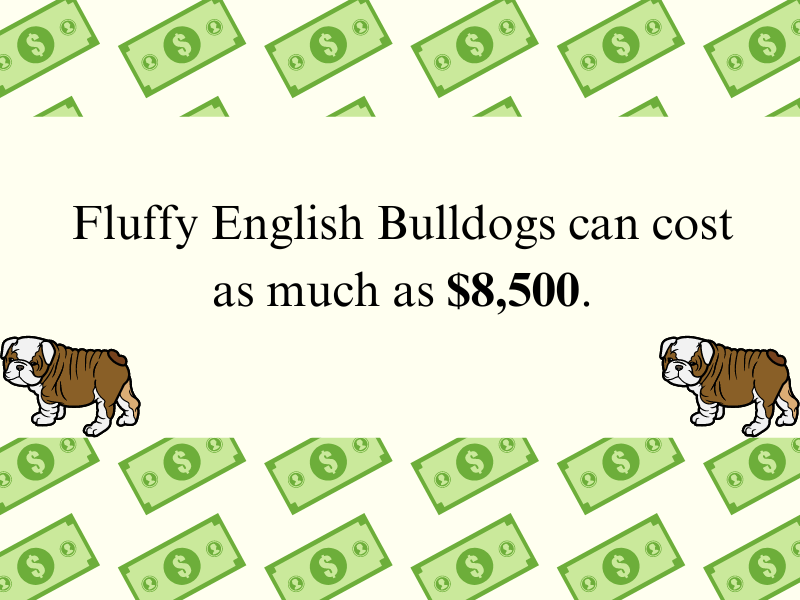
Purebred English Bulldogs are more expensive than other related dog breeds owing to the additional care required upon birth. After an English Bulldog approaches the latter stages of pregnancy, it must be watched appropriately.
English Bulldog puppies must typically be born through cesarean section since their mothers often cannot birth them usually due to their size.
The cost of each pup often increases due to the mother dog’s prenatal care.
To realize profits, reputable breeders of English Bulldogs don’t arbitrarily set this breed’s price high. In addition to paperwork and register records, your Bulldog’s typical price may depend on lineage, age, and coat color.
The following is a thorough list of the variables influencing an English Bulldog’s price range:
- Age: Bulldog puppies typically cost more since they’re younger and more energetic than senior or adult dogs.
Although puppies are fun to be around since they’re healthy, old dogs often have many health concerns (see above) that require medical treatment. - Gender: Female English Bulldogs can cost a little bit more than males due to their ability to reproduce.
The prices of female English Bulldogs are generally driven up by demand. Because of their excellent disposition, female Bully puppies are also sought more by prospective owners and Bulldog lovers. - Appearance: Since specific coat colors are more challenging to breed than others, this may impact the cost of an English Bulldog.
English Bulldogs with more unique hues like tricolor, merle, and blue are often substantially more expensive. Longer hair is not a common trait, and this will also drive up the price. - Bloodline: An English Bulldog puppy that’s an offspring of a champion might cost as much as four times the price of a regular English Bulldog puppy.
These dogs are renowned for having the greatest physical attributes, dispositions, and health. Also, they’re ideal for competitions. - Breeder’s Reputation: You can anticipate spending more when buying an English Bulldog from a reputable breeder. Successful breeding records go back a long way for quality breeders.
Furthermore, they’ll often supply health guarantees and other protections, justifying their higher pricing.
Full registration documentation from the AKC, the United Kennel Club (UKC), and/or other organizations can sometimes be more costly for English Bulldog pups.
Expect that these documents won’t be free since they verify your English Bulldog’s purebred status. - Health Examinations: Many breeders check their pups for health issues before selling them.
If a puppy is judged to be in top health, the seller will typically charge more. However, seeking out a puppy with a health guarantee is still a wise choice. - Training and Socialization: Some English Bulldog breeders begin obedience training early to prevent pups from displaying aggressive or destructive behaviors.
Proper evaluation of your puppy’s temperament also requires socialization. Typically, the purchase of the puppy includes the price of training and socialization.
With the help of this list, you may already know how much the puppy you desire might cost. However, bear in mind that usually, the best way to determine if the breeder’s pricing is fair is to speak with them directly.
A typical adoption fee for an English Bulldog from a rescue organization or shelter is between $450 and $800.
This is a reasonable price when you consider that a professional breeder can charge up to $4,500 for a typical purebred puppy.
English Bulldogs that a rescue organization or shelter has saved have typically already undergone spaying or neutering, received their vaccinations, and have all the necessary registration papers.
They also usually go through behavioral rehabilitation and retraining before being placed up for adoption.
If you adopt one of these dogs, there’s a strong chance your canine friend will be older. While pups are likelier to be adopted immediately, dog rescue organizations often shelter more adult Bulldogs.
Are Fluffy Bulldogs the same as Mammut Bulldogs?
No, fluffy Bulldogs are not the same as Mammut Bulldogs.
The medium-sized Mammoth Bulldog, also called Mammut, is a mix of the American Bulldog, Bandogge, English Bulldog, Olde English Bulldogge, and Bullmastiff.
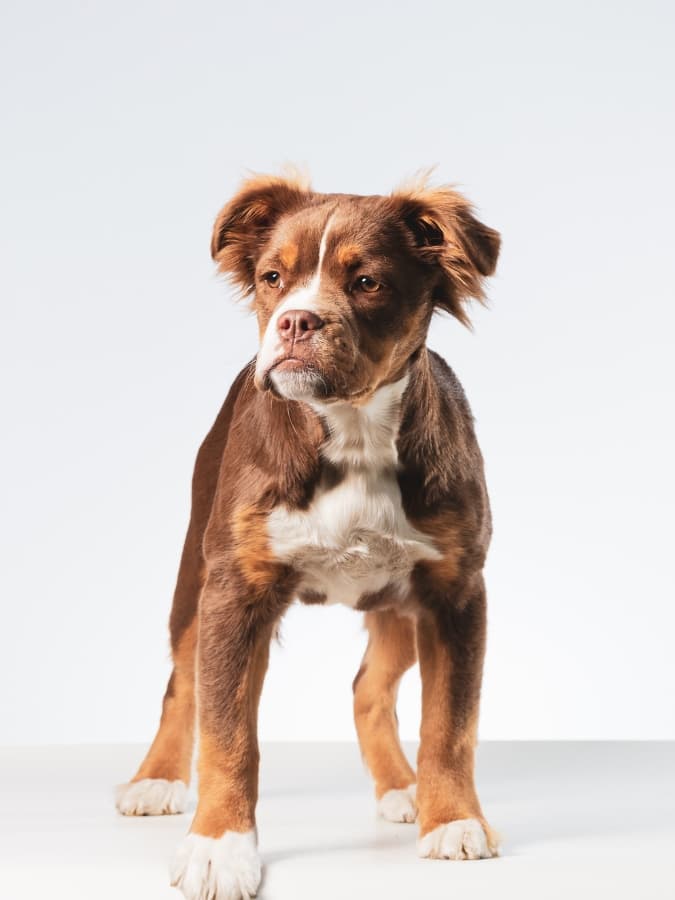
It represents a return to the earlier, longer-haired working Bulldog of the 1800s. These dogs are bred for strength and agility and are generally muscular. They typically don’t have any respiratory problems at all.
Mammut Bulldogs are a relatively new breed known for their larger size, longer hair, and more laid-back temperament than traditional English Bulldogs.
However, it’s worth noting that any major kennel clubs do not recognize the Mammut breed, and breeding practices can vary widely depending on the breeder.
As with any crossbred or hybrid breed, it’s essential to do thorough research and work with a reputable breeder if you’re considering acquiring a Mammut Bulldog.

